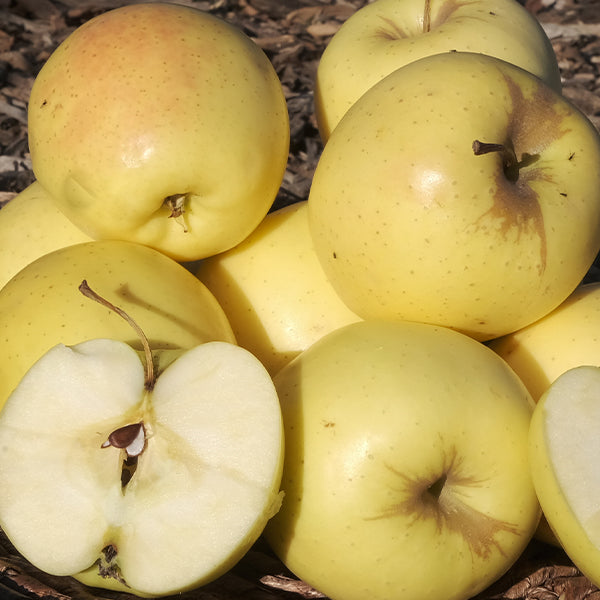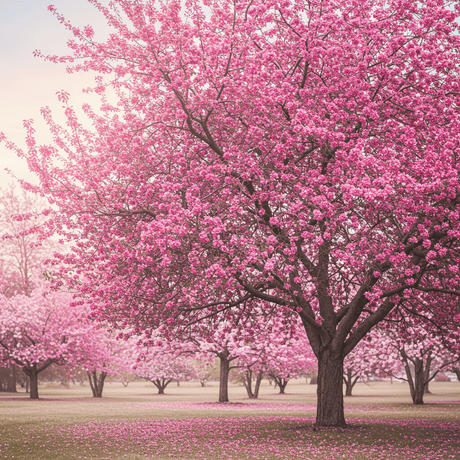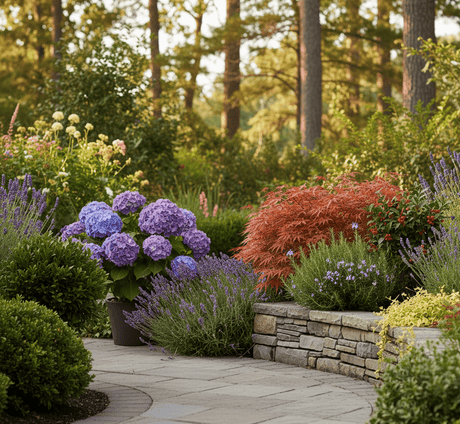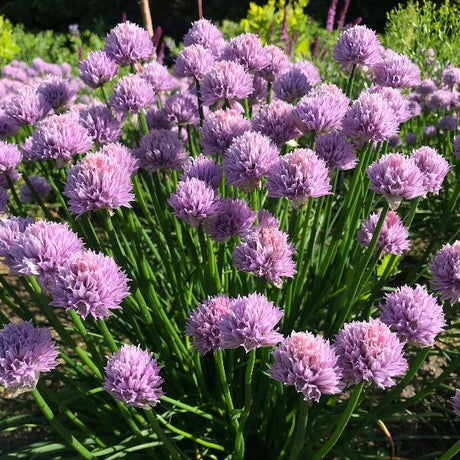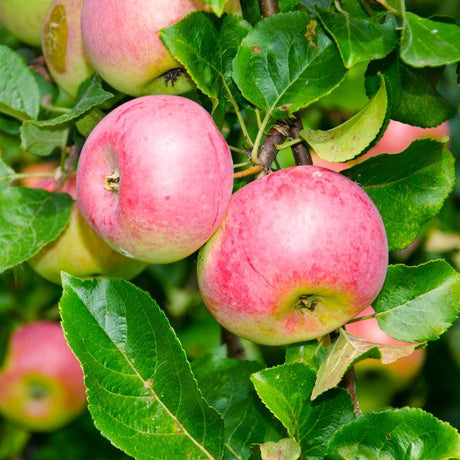Yellow Delicious Apple Tree
Malus domestica 'Yellow Delicious'
- Stay Protected with Plant Sentry ™
Yellow Delicious Apple Tree - #2 Container 3-4 Feet Semi Dwarf is backordered and will ship as soon as it is back in stock.
Plant Sentry™
Plant Sentry™

Plant Sentry™ Protected
Your order is protected by our compliance system that:
- Prevents restricted plants from shipping to your state
- Ensures plants meet your state's agricultural requirements
- Protects gardens from invasive pests and diseases
Delivery and Shipping
Delivery and Shipping
Delivery and Shipping
Fast, Safe Plant Delivery
Ships in 3-4 business days • Tracking provided • Weather protected
| Under $50 | $9.99 |
| $50 - $99.99 | $14.99 |
| $100 - $149.99 | $16.99 |
| $150 - $198.99 | $24.99 |
| $199+ | FREE |
✓ Zone-specific timing • ✓ Professional packaging • ✓ Health guarantee
Understanding Plant Options
Nature Hills offers plants in two main formats:
- Container Plants: Grown in pots with soil, sized by container volume and plant age
- Bare Root Plants: Dormant plants without soil, sized by height measurements
Container Plant Sizes
Container sizes indicate plant age and growing capacity rather than liquid volume equivalents. Our containers follow industry-standard nursery "trade gallon" specifications, which differ from standard liquid gallon measurements.
Young Plants (6 months to 18 months old)
| Container Size | Actual Volume | Metric Equivalent |
|---|---|---|
| 2" x 2" x 3" | 0.18 - 0.21 dry quarts | 0.20 - 0.23 dry liters |
| 4" Container | 0.31 - 0.87 dry quarts | 0.35 - 0.96 dry liters |
| 4.5" Container | 0.65 dry quarts | 0.72 dry liters |
| 6" Container | 1.4 dry quarts | 1.59 dry liters |
| 1 Quart | 1 dry quart | 1.1 dry liters |
| 5.5" Container | 1.89 dry quarts | 2.08 dry liters |
Established Plants (18 months to 2.5 years old)
| Container Size | Actual Volume | Metric Equivalent |
|---|---|---|
| 2 Quart | 2 dry quarts | 2.2 dry liters |
| #1 Container | 2.26 - 3.73 dry quarts | 2.49 - 4.11 dry liters |
| 5" x 5" x 12" | 3.5 - 4.3 dry quarts | 3.85 - 4.74 dry liters |
Mature Plants (2-4 years old)
| Container Size | Actual Volume | Metric Equivalent |
|---|---|---|
| #2 Container | 1.19 - 1.76 dry gallons | 5.24 - 7.75 dry liters |
| #3 Container | 2.15 - 2.76 dry gallons | 8.14 - 12.16 dry liters |
Large Plants (3-5 years old)
| Container Size | Actual Volume | Metric Equivalent |
|---|---|---|
| #5 Container | 2.92 - 4.62 dry gallons | 12.86 - 20.35 dry liters |
| #6 Container | 5.25 - 6.01 dry gallons | 23.12 - 26.42 dry liters |
| #7 Container | 5.98 - 6.53 dry gallons | 26.34 - 28.76 dry liters |
Bare Root Plants
Bare root plants are sold by height from the root system to the top of the plant. Plants may exceed minimum height requirements.
Common Sizes:
- Trees: 1 foot, 2 feet, 3 feet, 4 feet, 5 feet, 6 feet
- Shrubs & Perennials: 1 foot, 18 inches, 2 feet
Important Notes
Container Volume Specifications
- Trade Gallon Standard: Our containers follow industry-standard "trade gallon" specifications established by the American National Standards Institute (ANSI Z60.1) for nursery stock
- Volume Variations: Actual soil volume may vary due to plant root systems and growing medium settlement
- Age Indicators: Container size primarily indicates plant age and maturity rather than liquid volume equivalents
Growing Conditions
- Plant size can vary based on variety and growing conditions
- Container size helps indicate plant maturity and establishment level
- Larger containers generally mean more established root systems and faster landscape establishment
Seasonal Availability
- Bare root plants are available seasonally when dormant
- Container plants are available throughout the growing season
- Specific varieties may have limited availability in certain sizes
Questions?
For questions about specific plant sizes or availability, please contact our plant experts who can help you choose the right size for your landscape needs.
Plant Highlights
Yellow Delicious Apple Tree highlights at a glance!
-
Botanical Name
-
Brand
-
Growing Zones5, 6, 7, 8
-
Growth RateModerate
-
Mature Height
-
Mature Width
-
Leaf Color
-
Flower Color
-
NativeYes
-
Pollinator FriendlyYes
-
Pollinator Required
-
Bloom PeriodLate Spring
-
Harvest Time
-
FragrantYes
-
Does Not Ship To
Characteristics
Where To Plant
When To Prune
- Late Winter
Water & Moisture Needs
- Moderate
Sunlight Needs
Soil Needs
- Well Drained

Growing Zones 5-8
Useful, Great-Tasting Yellow Delicious Apple Tree
- Classic Apple is Great for Backyard Orchards
- Late Season
- Crisp Texture
- Sweet and Juicy
- Kid-Approved
- Wonderful Fresh Eating, Baking and Cooking Apple
- Keeps Well in Storage
- Excellent Pollinizer Tree for Other Apple Varieties
- Self-Pollinating, But Much Larger Harvests With Partner Trees
- Vigorous
- Widely Adaptable
- Displays Disease Resistance
People all across the country want to grow their own apples for the outstanding flavor of tree-ripe fruit. It's a great feeling to be prepared; and really nice to know exactly what was sprayed on your crop, as well.
Add a Yellow Delicious Apple Tree (Malus x 'Yellow Delicious') to your landscape this season. It's self-pollinating, so you really only need one to enjoy a crop of versatile golden, pink-blushed good eating apples.
But if you add an early Apple tree variety, and a mid-season Apple tree variety, you'll have much larger crops from each tree. Enjoy a month of super-fresh apples from your very own orchard!
This hardy tree bears fruit in landscapes across the country. Cold-hardy, heat tolerant, and disease-resistant, this kid-friendly planted tree is an excellent choice.
A close relative of Golden Delicious Apple, his late season favorite is an excellent pollinizer for other trees. Your whole family will appreciate the sweet, crisp, juicy flesh as a snack straight from the tree.
Prep them for homemade applesauce, made just the way you like it best. Peel and slice with a few other varieties for outstanding pies, cobblers and tarts.
Why suffer through a bland, store-bought apple? Grow your own and enjoy the "real deal"...after all, nothing tastes quite so satisfying as fruit from your very own fruit picked at the peak of ripeness.
Order Yellow Delicious Apple today, and get started this season.
How to Use Yellow Delicious Apple Tree in the Landscape
Add fruiting trees to your Victory Garden as a productive (and beautiful) backdrop. This tree develops showy, golden orbs that are a lot of fun to watch.
They'll look great from the beautiful white flowers in early spring, to finished! Plant them in a high-traffic area to enjoy the show. You'll have pride developing an effective Edible Landscape that feeds yourself, family and friends.
If you only have room for one tree, allow the self-pollinating tree to grow to its full size and spread. Or, take the plunge with a high-density planting of 3 or 4 varieties grown in a single hole! Consider all these trees as a single tree with 4 trunks.
Manage the high-density planting with annual pruning for size control each summer. Don't let any one of the varieties "take over" the planting. Prune to keep them all in balance.
Yellow Delicious is one of the world's best pollinators for other varieties. Add an early and mid-season variety for a successive harvest of great-tasting fruit.
#ProPlantTips for Care
Apple trees require full sun, or at least six hours of direct sunlight for fruiting. Give Apple trees good air circulation, and well-drained soil.
Improve drainage by mounding up dirt in a heap that is 18 inches high and 3 feet wide. Plant directly in that mound, or add an attractive landscape border for a raised bed.
Conduct regular watering on a schedule. New trees need more attention, as do fruiting trees during drought conditions.
Apply a three-inch layer of mulch over the root system to cut down on surface evaporation. Please pull mulch back at least five inches from the trunk. You'll save money on water with regular application of wood mulch.
Correct shape by pruning in late winter while your tree is dormant. Remove crossing branches to open up the canopy before new growth appears. The goal is to increase sunlight and air circulation through the tree's branches and leaves.
Enjoy the sweet, crunchy fruit produced by your Yellow Delicious Apple tree. Just place your order soon, as we will sell out of this classic variety.
Yellow Delicious Apple Tree Frequently Asked Questions
When to Plant Yellow Delicious Apple Trees
Planting Bareroot trees as soon as you can dig a hole in spring and until hot weather, the earlier the better. Plant container Apple trees throughout the growing season with complete success - that is the benefit of container plants - to extend the planting season. Your County Agricultural Extension Office is a great resource for first and last frost dates in your area.
How to Plant Yellow Delicious Apple Trees
Dig a large hole only as deep as needed to accommodate the bareroot or container root ball, and twice as wide. Add Nature Hills Root Booster to speed root establishment. Remove the pot or bag and situate it into the hole so the top of the soil (soil line if bareroot), is level with the new location's soil being careful not to plant too deep. Water in again very well and backfill with the same soil you dug up, tamping down gently to ensure there are no air pockets.
Top off with a 3-4 inch thick layer of Arborist mulch. Consider staking your tree to keep its trunk growing straight for the first year to ensure it stands tall against strong winds and drifting snow.
When to Prune Yellow Delicious Apple Trees
Trim off any broken branches from delivery as soon as you take them out of the box. Prune and trim apple trees while dormant, in late winter or early spring, before you see new growth.
How to Prune Yellow Delicious Apple Trees
Dormant prune to:
- Remove any double leaders or narrow crotch angles
- Eliminate any crossing branches
- Thin interior branching and leave the fruiting spurs and strong branches in place opening up the canopy
- Branching at least 24-36 inches above the ground
Prune Apple trees in the summer to:
- Control size and shape by reducing the length of longer new growth on vigorous trees
- Remove water sprouts on the main trunk or older branches in the crown
- Remove suckers at the base of the trunk
- Thin fruit during heavy years on established trees
How to Care for Yellow Delicious Apple Trees
Growing an apple tree is easy when proper soil, good drainage, attention to moisture, and regular fertility are maintained. Once you've chosen an apple tree that works for your climate, in the size you need for your landscape, and its pollinator (if needed), then you've accomplished half the battle!
- Apple trees do best in full sun and well-drained soil
- Water your apple trees when it gets dry - especially during the fruit production stage, and drought periods to keep it stress-free
- Use arborists' wood chips to mulch over the roots of your apples and have your soil tested to see what your soil may be lacking before adding fertilizers
- Maintenance pruning and shaping
Apple trees will tolerate a wide range of soils, so long as water and nutrients are not limited and the pH level is adequate.
How to Fertilize Yellow Delicious Apple Trees
For the first year, water alone is most important. It is always best to get a soil test to see what your soil is lacking before adding more fertilizers. Once established, a fertilizer routine may be beneficial. We do offer some excellent slow-release organic options, applied according to the package directions.
Fruit trees need more phosphate and it's possible to apply too much nitrogen which affects the soil's pH. Test soil acidity or alkalinity using a pH Tester.
Fertilize in spring when you first see new growth emerging.
- Don't overdo it
- Phosphates are your friends
- Pay attention to pH in areas with extremely high or low soil pH
- Follow the directions
Yellow Delicious Apple Tree Pollinating Info
Yellow Delicious is self-fruiting and doesn't need a pollinating partner, but will bear more fruit when paired with these varieties:
Harvest Times for Yellow Delicious Apple Trees
Yellow Delicious’s are typically ready to harvest in September.
Early-Season? Mid-Season? Late-Season? The terminology can be confusing for new apple tree growers. Weather, climate and your tree determine when it's ripe.
For Apples:
- Early-season is usually June-July
- Mid-season can be August-September
- Late-season can be from late September-November
The growing season consists of spring, summer, and fall, and varies with climate and weather. Areas with longer growing seasons in the warmer hardiness zones can greatly affect the harvest times for each particular apple variety grown in your area. Learn which growing zone you are in.
What Shipping Options Do You Offer?
NatureHills.com works closely with our growers and nursery professionals to ensure we ship when it is most appropriate for your area. Our goal is to deliver the hardiest plants by avoiding extreme high and low temperatures. Check out our shipping schedule for more information and to learn our wills and won'ts when it comes to shipping plants. Find your Yellow Delicious Apple Tree for sale here at NatureHills.com!
Rootstocks Explained
Apple trees have been grafted onto different rootstocks since before the mid-1800s. Different rootstocks are used to improve the anchoring of trees, eliminate diseases, and reduce the natural mature size of the tree itself. While there are many different types of rootstock, they are all labeled as being either Dwarf, Semi-Dwarf, or Standard.
The apple descriptions, including flowering, pollination, and apple characteristics are the same whether the plant is grown on a standard rootstock or some varying dwarfing rootstock. The overall size can vary by climate and soil but the understock used is ultimately what affects the mature size.
There will be some variation in sizes but as a guide, we are suggesting the overall mature size of these apple varieties are:
Semi-Dwarf Apples
- Height: 12-18 feet
- Spread: 10 - 15 feet
Standard Apples
- Height 18 - 25 feet
- Spread: 15 - 18 feet
Remember that all fruit tree sizes can easily be altered if needed by simple pruning as the trees grow and develop.

